Electronic Power Transformer: Revolutionizing Modern Power Distribution Systems?
Have you ever wondered why power outages still happen in our high-tech world? The answer might lie in outdated power distribution technology. But there’s a solution on the horizon.
Electronic Power Transformers (EPTs) are revolutionizing power distribution systems. They combine traditional transformer functions with advanced power electronics, offering improved efficiency, power quality, and grid stability. EPTs are key components in the development of smart grids and modern power systems.
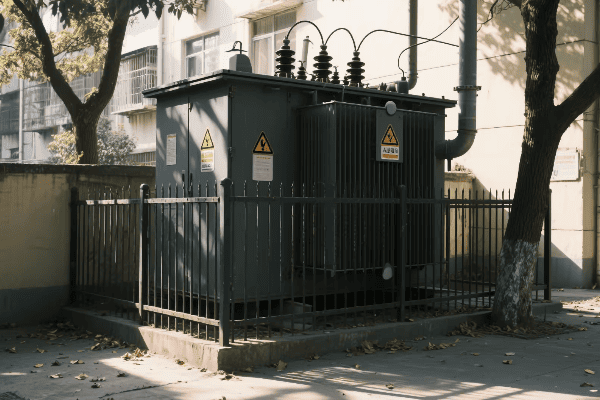
In this article, I’ll explain how Electronic Power Transformers are changing the game. As someone who’s worked with both traditional and electronic transformers, I’ve seen firsthand the impact of this technology.
How Do Electronic Power Transformers Differ from Traditional Transformers in Design and Function?
When I first encountered an Electronic Power Transformer, I was amazed by its complexity compared to traditional transformers. It was like comparing a smartphone to a landline.
Electronic Power Transformers differ from traditional transformers by incorporating power electronic converters. They use high-frequency switching to transform voltage, allowing for more compact designs and additional functionalities like active power flow control and harmonic mitigation.
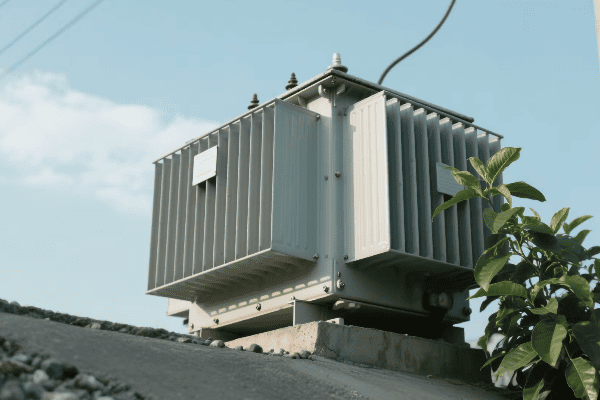
Let’s dive deeper into the differences between EPTs and traditional transformers:
Core Design
The core design of EPTs is fundamentally different:
- Traditional Transformers: Use large iron cores for 50/60 Hz operation.
- EPTs: Employ smaller, high-frequency cores.
I remember working on a project where space was a major constraint. The compact design of the EPT allowed us to fit it into a space half the size of what a traditional transformer would have required.
Power Conversion Process
The power conversion process in EPTs is more complex:
| Stage | Traditional Transformer | Electronic Power Transformer |
|---|---|---|
| Input | AC directly to core | AC to DC conversion |
| Transformation | Magnetic field in core | High-frequency switching |
| Output | AC from secondary winding | DC to AC conversion |
This multi-stage conversion in EPTs allows for greater control over the output. In one project, we were able to maintain a stable output voltage despite significant input fluctuations, something that would have been challenging with a traditional transformer.
Frequency Operation
The frequency operation is a key differentiator:
- Traditional Transformers: Operate at grid frequency (50/60 Hz).
- EPTs: Use high-frequency switching (typically kHz range).
The high-frequency operation of EPTs results in smaller magnetic components. I’ve seen EPTs that are 30% lighter than their traditional counterparts with the same power rating.
Control Capabilities
EPTs offer superior control capabilities:
- Voltage Regulation: EPTs can provide precise voltage control.
- Power Factor Correction: They can adjust power factor in real-time.
- Harmonic Mitigation: EPTs can actively filter out harmonics.
In a recent industrial project, we used an EPT to solve both voltage regulation and harmonic issues that were plaguing the client’s sensitive equipment. It was like killing two birds with one stone.
Fault Handling
Fault handling is another area where EPTs shine:
- Traditional Transformers: Rely on external protection devices.
- EPTs: Can limit fault currents internally.
I once worked on a grid upgrade where the increased fault current levels were a major concern. By using EPTs, we were able to limit fault currents without additional equipment, simplifying the overall system design.
What Are the Key Advantages of Electronic Power Transformers in Smart Grid Applications?
Smart grids are the future of power distribution, and Electronic Power Transformers are playing a crucial role. I’ve seen firsthand how EPTs can transform a traditional grid into a smart, responsive system.
Electronic Power Transformers offer several key advantages in smart grid applications. These include real-time voltage regulation, power flow control, enhanced communication capabilities, and improved power quality. EPTs enable more efficient integration of renewable energy sources and support advanced grid management functions.
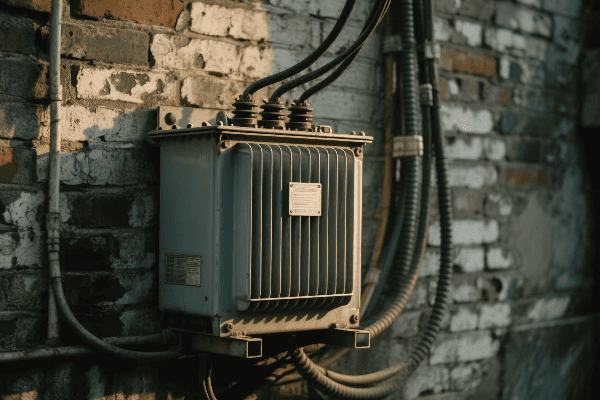
Let’s explore the advantages of EPTs in smart grid applications:
Real-Time Voltage Regulation
EPTs excel at voltage regulation:
- Traditional Transformers: Use tap changers, slow response.
- EPTs: Provide instantaneous voltage adjustment.
I once worked on a project integrating a large solar farm into the grid. The EPTs we used could adjust voltage in milliseconds, compensating for the rapid fluctuations in solar output.
Power Flow Control
EPTs offer unprecedented control over power flow:
| Aspect | Traditional Transformer | Electronic Power Transformer |
|---|---|---|
| Active Power | No control | Can control direction and magnitude |
| Reactive Power | Limited control via tap changers | Full four-quadrant control |
This level of control is game-changing. In a recent microgrid project, we used EPTs to balance loads between different renewable sources and storage systems, optimizing the overall system efficiency.
Enhanced Communication
EPTs are designed for the digital age:
- Data Collection: EPTs can gather detailed operational data.
- Network Integration: They can easily integrate with SCADA systems.
- Remote Control: EPTs allow for remote operation and adjustment.
I remember a utility project where the ability to remotely adjust EPT settings saved countless truck rolls, significantly reducing operational costs.
Improved Power Quality
Power quality improvement is a major advantage of EPTs:
- Harmonic Mitigation: EPTs can actively filter out harmonics.
- Voltage Balancing: They can balance voltages in three-phase systems.
- Flicker Reduction: EPTs can mitigate voltage flicker.
In an industrial park project, the installation of EPTs resolved long-standing power quality issues that had been affecting sensitive manufacturing processes.
Renewable Energy Integration
EPTs facilitate the integration of renewable energy sources:
- Voltage Support: They can provide voltage support for intermittent sources.
- Frequency Regulation: EPTs can help maintain grid frequency.
- Fault Ride-Through: They enhance the grid’s ability to handle faults.
I’ve worked on several wind farm integration projects where EPTs were crucial in meeting grid code requirements, allowing for higher penetration of wind power.
How Do Electronic Power Transformers Enhance Power Quality and System Reliability?
Power quality and system reliability are critical in our increasingly digital world. I’ve seen how poor power quality can wreak havoc on sensitive equipment and how unreliable power can cost businesses millions.
Electronic Power Transformers enhance power quality and system reliability through active voltage regulation, harmonic mitigation, and fault current limiting. They provide rapid response to power disturbances, maintain stable voltage profiles, and improve overall grid resilience.
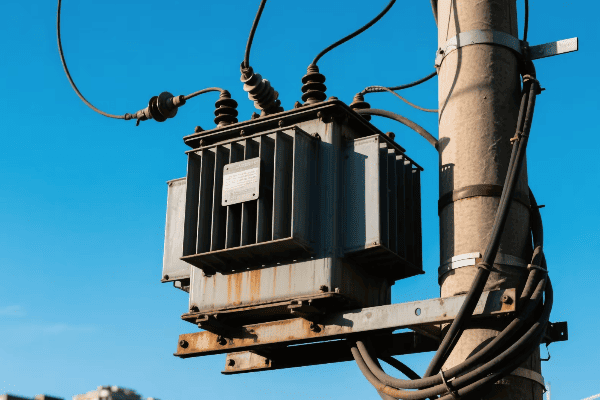
Let’s delve into how EPTs enhance power quality and system reliability:
Active Voltage Regulation
EPTs offer superior voltage regulation:
- Fast Response: Can adjust voltage in cycles rather than seconds.
- Wide Range: Typically can regulate voltage ±10% or more.
- Independence: Each phase can be regulated independently.
I once worked on a project in an area with frequent voltage sags. The EPTs we installed maintained a stable voltage profile, protecting sensitive industrial equipment from damage and downtime.
Harmonic Mitigation
Harmonics are a growing concern in modern power systems:
| Harmonic Order | Traditional Transformer | Electronic Power Transformer |
|---|---|---|
| Low Order | Passive filtering | Active cancellation |
| High Order | Limited mitigation | Effective reduction |
In a data center project, the EPTs we used reduced total harmonic distortion from over 8% to less than 3%, significantly improving the efficiency and reliability of the IT equipment.
Fault Current Limiting
EPTs can actively limit fault currents:
- Fast Detection: EPTs can detect faults in less than a millisecond.
- Active Limiting: They can reduce fault current magnitude.
- Coordination: This feature simplifies protection system design.
I remember a grid upgrade project where the increased fault levels would have required extensive switchgear replacements. By using EPTs with fault current limiting capabilities, we avoided these costly upgrades.
Power Factor Correction
EPTs can dynamically correct power factor:
- Real-Time Adjustment: Can respond to changing load conditions.
- Full Range: Can operate in all four quadrants of P-Q plane.
- Localized Correction: Reduces the need for central compensation.
In an industrial facility project, the EPTs’ power factor correction feature eliminated the need for separate capacitor banks, simplifying the system and improving reliability.
Voltage Balancing
Three-phase voltage balancing is another key feature:
- Phase-Independent Control: Each phase can be regulated separately.
- Load Balancing: Can help balance uneven loads across phases.
- Negative Sequence Mitigation: Reduces issues from unbalanced conditions.
I’ve seen EPTs solve voltage balancing issues in areas with high concentrations of single-phase loads, improving overall system efficiency and reducing equipment stress.
What Role Do Power Electronics Play in the Operation of Electronic Power Transformers?
Power electronics are the heart of Electronic Power Transformers. As someone who’s worked extensively with both traditional transformers and EPTs, I can say that power electronics are what give EPTs their "super powers."
Power electronics play a crucial role in Electronic Power Transformers. They enable high-frequency power conversion, allowing for smaller magnetic components. Power electronic converters provide precise control over voltage, current, and power flow, enabling advanced features like active filtering and fault current limiting.

Let’s explore the role of power electronics in EPTs:
AC-DC-AC Conversion
The core function of power electronics in EPTs is AC-DC-AC conversion:
- Rectification: Converts input AC to DC.
- DC Link: Provides a stable DC voltage.
- Inversion: Converts DC back to AC at the desired voltage and frequency.
I remember working on an EPT design where this conversion process allowed us to completely isolate the input and output, providing superior protection against grid disturbances.
High-Frequency Operation
Power electronics enable high-frequency operation:
| Aspect | Traditional Transformer | Electronic Power Transformer |
|---|---|---|
| Operating Frequency | 50/60 Hz | kHz range |
| Core Size | Large | Significantly smaller |
| Weight | Heavy | Much lighter |
In a recent project, the high-frequency operation allowed us to reduce the transformer’s weight by 40%, making installation in a space-constrained urban substation much easier.
Advanced Control Algorithms
Power electronics in EPTs run sophisticated control algorithms:
- Voltage Regulation: Maintains stable output voltage.
- Current Control: Manages current flow and limits faults.
- Power Flow Control: Directs active and reactive power flow.
I’ve implemented control algorithms that allow EPTs to respond to grid conditions in milliseconds, something unthinkable with traditional transformers.
Harmonic Compensation
Power electronics enable active harmonic compensation:
- Harmonic Detection: Identifies harmonic components in real-time.
- Cancellation: Generates opposing harmonics to cancel out distortions.
- Adaptive Control: Adjusts to changing harmonic profiles.
In an industrial park project, the EPTs’ harmonic compensation feature eliminated the need for separate harmonic filters, simplifying the system and reducing costs.
Fault Current Limiting
Power electronics provide fault current limiting capabilities:
- Fast Detection: Identifies fault conditions rapidly.
- Current Limiting: Actively restricts fault current magnitude.
- Coordination: Works with existing protection systems.
I’ve seen EPTs limit fault currents to levels that existing switchgear could handle, avoiding costly equipment upgrades in grid expansion projects.
How Are Electronic Power Transformers Addressing Energy Efficiency and Environmental Concerns?
Energy efficiency and environmental concerns are at the forefront of power system design today. I’ve seen a growing demand for solutions that not only perform well but also minimize environmental impact.
Electronic Power Transformers address energy efficiency and environmental concerns through reduced losses, optimized operation, and support for renewable energy integration. They enable more efficient power flow, reduce the need for additional power quality equipment, and can be designed with environmentally friendly materials.
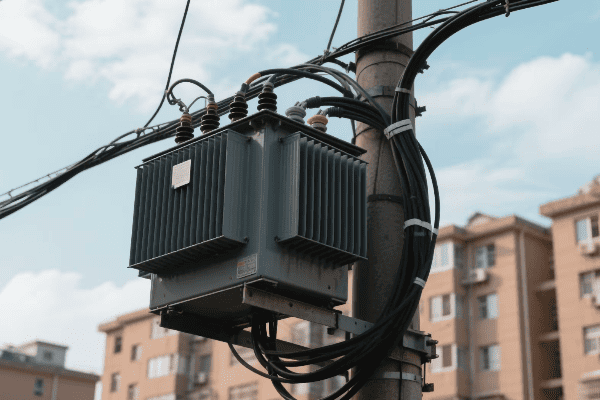
Let’s explore how EPTs are tackling these important issues:
Reduced Losses
EPTs can significantly reduce energy losses:
- No-Load Losses: Smaller core reduces iron losses.
- Load Losses: Advanced semiconductors minimize conduction losses.
- Overall Efficiency: Can exceed 99% in some designs.
I worked on a project replacing traditional transformers with EPTs in a large commercial building. The energy savings were impressive, with overall losses reduced by more than 20%.
Optimized Operation
EPTs can optimize their operation for maximum efficiency:
| Aspect | Traditional Transformer | Electronic Power Transformer |
|---|---|---|
| Load Adaptation | Fixed design | Can adapt to load conditions |
| Partial Load Efficiency | Lower | Maintains high efficiency |
| Power Factor | No control | Can optimize for unity power factor |
In a recent microgrid project, the EPTs’ ability to adapt to varying load conditions resulted in consistently high efficiency, even during low-load periods.
Renewable Energy Integration
EPTs facilitate the integration of renewable energy sources:
- Voltage Support: Helps stabilize voltage with intermittent sources.
- Frequency Regulation: Assists in maintaining grid frequency.
- Bi-Directional Power Flow: Supports energy storage integration.
I’ve worked on several solar farm projects where EPTs were crucial in meeting grid connection requirements, allowing for higher penetration of solar energy.
Reduced Material Usage
EPTs often use less material than traditional transformers:
- Smaller Core: High-frequency operation allows for smaller magnetic components.
- Less Copper: Compact design reduces the amount of copper needed.
- Reduced Oil: Some designs eliminate the need for large oil volumes.
In a recent substation upgrade project, the compact EPTs allowed us to increase capacity without expanding the substation footprint, preserving valuable urban land.
Environmental-Friendly Materials
EPTs can be designed with more environmentally friendly materials:
- Dry-Type Designs: Eliminate the need for insulating oil.
- Biodegradable Fluids: When liquid cooling is needed, bio-based fluids can be used.
- Recyclable Components: Power electronic components are often more recyclable than traditional transformer materials.
I remember a project where the client’s environmental concerns led us to choose EPTs with biodegradable cooling fluids, significantly reducing the environmental risk.
Conclusion
Electronic Power Transformers are revolutionizing power distribution systems. They offer improved efficiency, power quality, and grid stability. As smart grids evolve, EPTs will play a crucial role in creating more reliable, efficient, and environmentally friendly power systems.
Free CHBEB Transformer Catalog Download
Get the full range of CHBEB transformers in one catalog.
Includes oil-immersed, dry-type, pad-mounted, and custom solutions.
Quick Message
Request A free quote
We'd like to work with you
- +86 15558785111
- [email protected]
- +86 15558785111
What We Do
CHINA BEI ER BIAN (CHBEB) GROUP, with 218 million in registered capital, originated from Beijing Beierbian Transformer Group. Headquartered in Beijing for R&D, it operates major production bases in Nanjing and Yueqing, producing high-quality products.
Latest Product
address
BeiJing
No 3,RongJing East Road,BeiJing Economic Technological Development Area,BeiJing,China
JiangSu
No 7️Xiangfeng Road,Jiangning,NanJing,JiangSu,China
WenZhou
No.211, Wei 16 Road, Industrial Zone, Yueqing, Wenzhou, Zhejiang, China.
XiangYang Industrial Zone ,YueQing,WenZhou,ZheJiang,China
contact us
- [email protected]
- +86 13057780111
- +86 13057780111
- +86 15558785111
Copyright © Bei Er Bian Group


